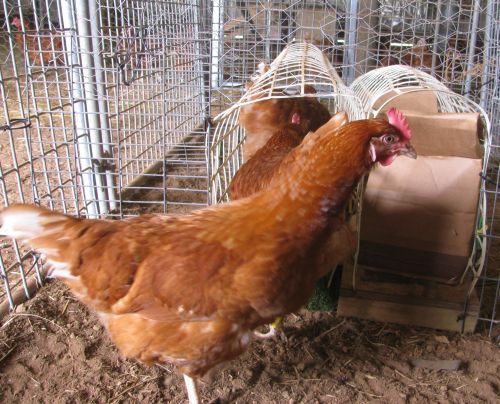Professor Geoff Hinch (University of New England) is researching new approaches to assessing welfare and behaviour of free-range laying hens. This joint University of New England/CSIRO project, supported by the Poultry CRC, harnesses behavioural demand techniques and judgement bias to measure birds’ use of outdoor space and to find out how they ‘feel’.
Determining a reliable, objective measure of welfare, regardless of the housing system, is an ongoing challenge for welfare scientists. This is especially true under free-range conditions, where there is considerable variation in the use of outdoor space between birds and between social groups of birds within the flock. Although provision of outdoor space is perceived to be one of the virtues of free-range systems, it becomes difficult to assess its welfare benefits if it is not used by all birds. Some European estimates of up to 20% use of outdoor space by birds are considered high.

Geoff’s approach to this problem has been to employ Radio Frequency Identification (RFID) technology. This permits Geoff’s team to identify hens that proportionally spend more time either indoors or outdoors, and then any physiological and behavioural differences between these individuals (or groups) may be examined.
Assessing how the bird ‘feels’ about itself, that is, its welfare state, has been challenging to say the least. “This is hard to work out; it is difficult to put the bird in a negative frame of mind” said Geoff. To get around this, Geoff has adopted new judgement bias techniques, which use an arena with cue cards associated with different food rewards. The method aims to identify when a bird is more ‘optimistic’ as opposed to more ‘pessimistic’.
For the physical tracking of bird movements, there have been some practical difficulties in using the RFID tags. The sensor ‘plate’ that reads these tags (on the bird’s ankle) can be stepped over and only allows for one bird at a time, which gives rise to potential for non-recording. Geoff’s team has built tunnels around the plates to ensure accurate tracking of bird movements.
This research area is gaining momentum as the free-range sectors of the poultry industry are growing rapidly in Australia, representing approximately 28% of all eggs sold, and approximately 15% of chicken meat produced in 2010. Both sectors are expected to continue to expand as some consumers express their preference for free-range production.



